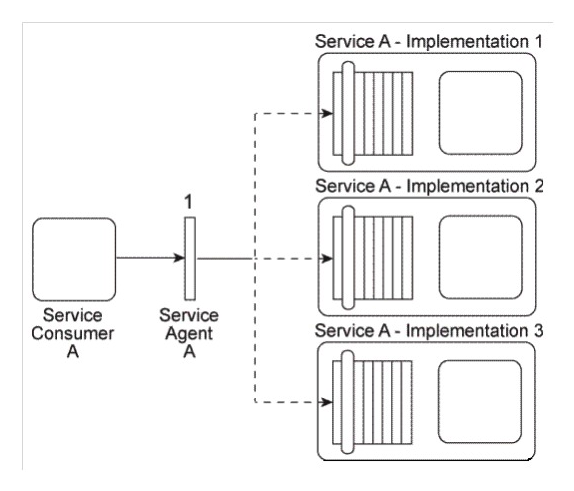Multiple Choice
It has been confirmed that Policy A and Policy B are, in fact, the same policy and that the security credential check performed by Service Agent B also needs to be carried out on messages sent to Service B .  How can this service composition architecture be changed to reduce the redundancy of policy content and fulfill the new security requirement?
How can this service composition architecture be changed to reduce the redundancy of policy content and fulfill the new security requirement?
A) The Policy Centralization pattern can be applied so that Policy A and Policy B are combined into the same policy. The policy enforcement logic is removed from Service Agent C and Service Agent A is then used to enforce the policy for messages sent to Service A and Service B . Service Agent B can be used to perform the security credential check for Service A and Service B .
B) The Policy Centralization pattern can be applied so that Policy A and Policy B are combined into the same policy. The Service Agent pattern is then applied to introduce a new service agent (called Service Agent D) which carries out the validation and enforcement of Policy A and Policy B. Service Agent B can be moved so that it performs the security credential check for Service B, but not for Service A .
C) The Policy Centralization pattern can be applied so that Service Agent A is changed to enforce the policy for messages sent to Service A and Service B and to perform the security credential check for Service A and Service B .
D) None of the above.
Correct Answer:

Verified
Correct Answer:
Verified
Q10: Service Consumer A sends Service A a
Q11: Service A is a task service that
Q12: Service A is an entity service that
Q13: The architecture for Service A displayed in
Q14: Service A is a task service that
Q16: Service Consumer A sends a message with
Q17: Service Consumer A sends a message to
Q18: Our service inventory contains the following three
Q19: Service Consumer A sends a message with
Q20: You are told that in this service